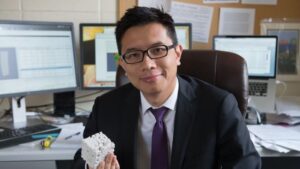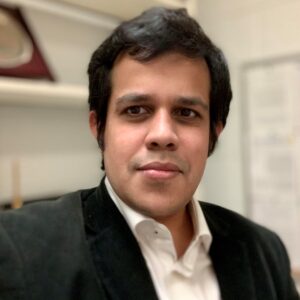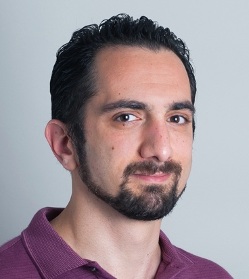https://s.uconn.edu/meseminar3/12
Abstract:
This talk will discuss a novel dynamic subgrid-scale (SGS) modeling approached called Coherent-vorticity Preserving (CvP) Eddy-Viscosity Correction [1], which has been designed for very rapid evaluation of the SGS vortical activity, enabling local and instantaneous modulation of the turbulent eddy viscosity. The CvP-LES approach has been validated against large-scale direct-numerical simulation (DNS) employing a new block-spectral adaptive mesh refinement code named VAMPIRE [2], providing new insights into complex dynamics of high-Reynolds-number vortex dominated flows. The CvP-LES has performed exceptionally well in complex vortical flows such as double helical vortices [3] and trefoil knotted vortices [4], demonstrating a drastic reduction in computational time while being able to correctly predict the evolution of global quantities such as the total helicity, which rely on very small-scale non-equilibrium turbulent production events.
[1] J-B Chapelier, B Wasistho, and C Scalo. A Coherent-vorticity Preserving Eddy-viscosity Correctionfor Large-Eddy Simulation. Journal of Computational Physics, 359:164–182, 2018.
[2] Xinran Zhao and Carlo Scalo. A Compact-Finite-Difference-Based Numerical Framework for Adaptive-Grid-Refinement Simulations of Vortex-Dominated Flows. In AIAA Scitech 2020 Forum, 2020.
[3] J-B. Chapelier, B. Wasistho, and C. Scalo. Large-Eddy Simulation of Temporally Developing DoubleHelical Vortices. Journal of Fluid Mechanics, 863:79–113, 01 2019.
[4] Xinran Zhao, Zongxin Yu, Jean-Baptiste Chapelier, and Carlo Scalo. Direct numerical and large-eddysimulation of trefoil knotted vortices. Journal of Fluid Mechanics, 910:A31, 2021.
Biographical Sketch:
Dr. Carlo Scalo is an Associate Professor in the School of Mechanical, and Aeronautical and Astronautical Engineering (by courtesy) at Purdue University. His research interests focus on computational aeroacoustics, vortex dynamics, low- and high-speed turbulent boundary layers, and hypersonics. Dr. Scalo has received three distinct Young Investigator Program (YIP) Awards from the Department of Defense in: hypersonic boundary layer transition (Air Force), hypersonic boundary layer turbulence (Navy) and vortex dynamics (Army). Dr. Scalo is also the founder of HySonic Technologies – a Purdue start-up that received SBIR funding from the US Navy for the design of a new generation of aeroshells for hypersonic vehicles.





 Webex Link:
Webex Link: 
